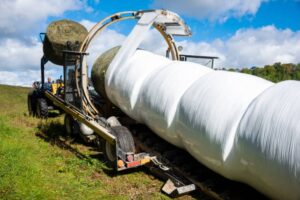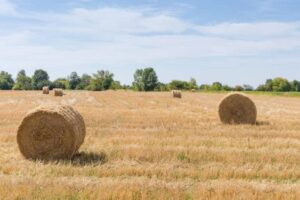Silage wrap is used to cover a bale of hay or other crops so that they can be preserved. This film helps prevent bug infestations, mould growth, and bacterial contamination.
A range of quality silage films for round and square bales are designed to withstand high-speed wrappers and Australian conditions. For more silage wrap supplier, click here.
Quality
 A good silage wrap supplier will sell a high-quality product that is durable and will last for a long time. It will also provide a firm seal around the bale, which is essential for protecting the hay from pests and moisture.
A good silage wrap supplier will sell a high-quality product that is durable and will last for a long time. It will also provide a firm seal around the bale, which is essential for protecting the hay from pests and moisture.
It will protect the forage from evaporation and facilitate controlled anaerobic fermentation, which increases its nutrition and improves its taste in the herds. It will also keep it safe from bugs, mould growth, and bacterial contamination.
MMP silage film is made from top-tier virgin raw materials and offers exceptional durability, which makes it ideal for outdoor storage applications. It is also resistant to punctures and abrasions, and it has excellent cling capabilities for round or grass bale wrapping. In addition, it contains UV stabilizers to prevent deterioration from prolonged exposure to sunlight. It is an environmentally safe product that is one hundred per cent biodegradable. It is also a sustainable option for farmers who are looking to reduce their environmental footprint.
Price
The agriculture industry is very competitive and sees tight margins and profitability. Silage wrap suppliers have a responsibility to provide high-quality products at a fair price so that farmers can make the best decision for their business and forage harvest. For more silage wrap supplier, click here.
Designed for optimum baling performance, this film clings tightly to the bale and eliminates air pockets that could cause spoilage. It is also puncture-resistant and can withstand the demands of handling, transport, and storage.
Sigma Ultra 5 is engineered for trouble-free wrapping, even in extreme climates. It’s excellent for overwrapping all forage types and is compatible with both traditional and in-line bale wrappers. It can be used for silage, dry hay, or straw bales. It is available in a variety of thicknesses and sizes. You can even find a version with high tack for easier wrapping. It’s also available in a long, 1650m roll to maximize your packaging efficiency.
Promotion
Farmers need to have access to quality silage wrap products that can keep their animals healthy and happy. It can also help them make the most of their land and avoid losing valuable crops due to poor weather conditions. Silage wrap keeps the forage in an airtight position and preserves its natural nutrients for livestock. It can also prevent the spread of diseases in the animals and protect their food supply.
Premium silage film is a high-performance stretch plastic that is made of Linear Low-Density Polyethylene (LLDPE). Its durability and strength allow it to resist damage from various environmental factors such as rain, wind, insects, and heat. It can be easily used on round and square bales of hay, grass, or other forages.
Its opaqueness limits heating from the sun, and its oxygen permeability is less than 0.8 bar. Its 5-layer co-extrusion blown film technology allows for specialized formulas in each layer, providing superior mechanical properties than traditional 11-layer cast films. For more silage wrap supplier, click here.
Customer Service
A good silage wrap supplier will offer excellent customer service and provide fast delivery. They should be able to answer questions about the product and help farmers choose the proper film for their needs. They should also provide support on the installation and maintenance of bale wrapping equipment.
The company should have a wide range of products for both large and small square and round hay and grass bales. It should also offer accessories such as twine, grain bags, poly and sisal bale ties, bale covers, bunker covers and repair tapes.
A good quality silage wrap should be able to seal tightly around the bale. This will prevent the bale from coming into direct contact with oxygen, which can cause spoilage. It will also ensure that the fermentation process takes place correctly and that the nutrients are preserved. It should also be able to withstand punctures and tears. It should be easy to use with a bale wrapping machine and should be suitable for all climatic conditions.
 The
The